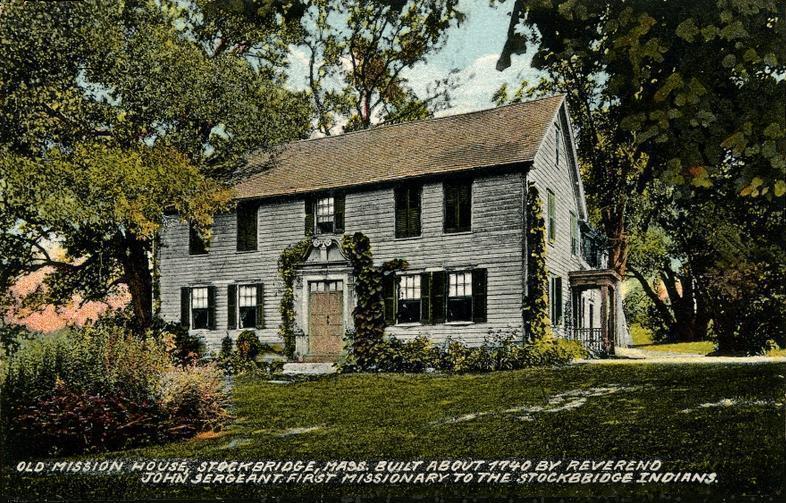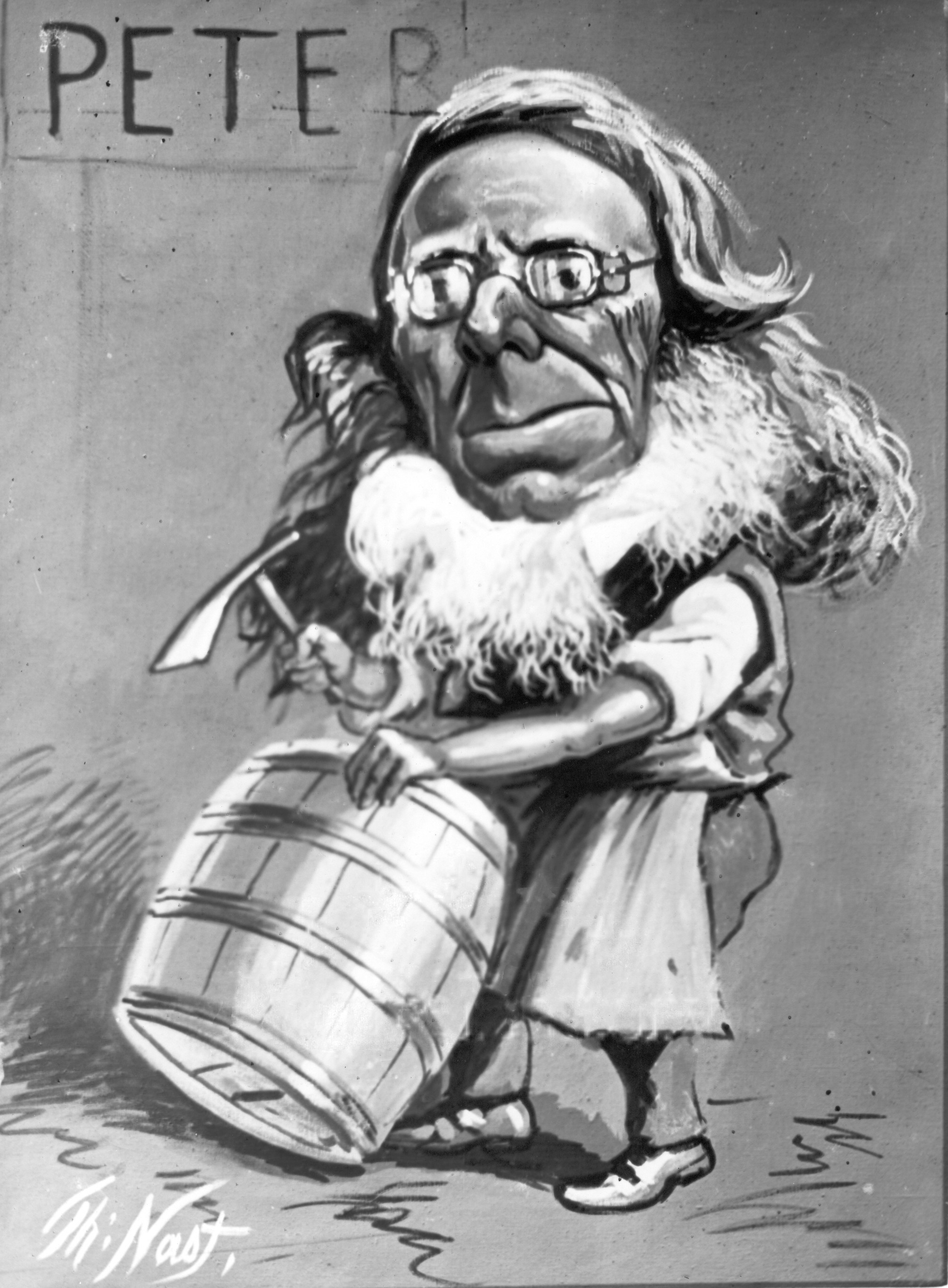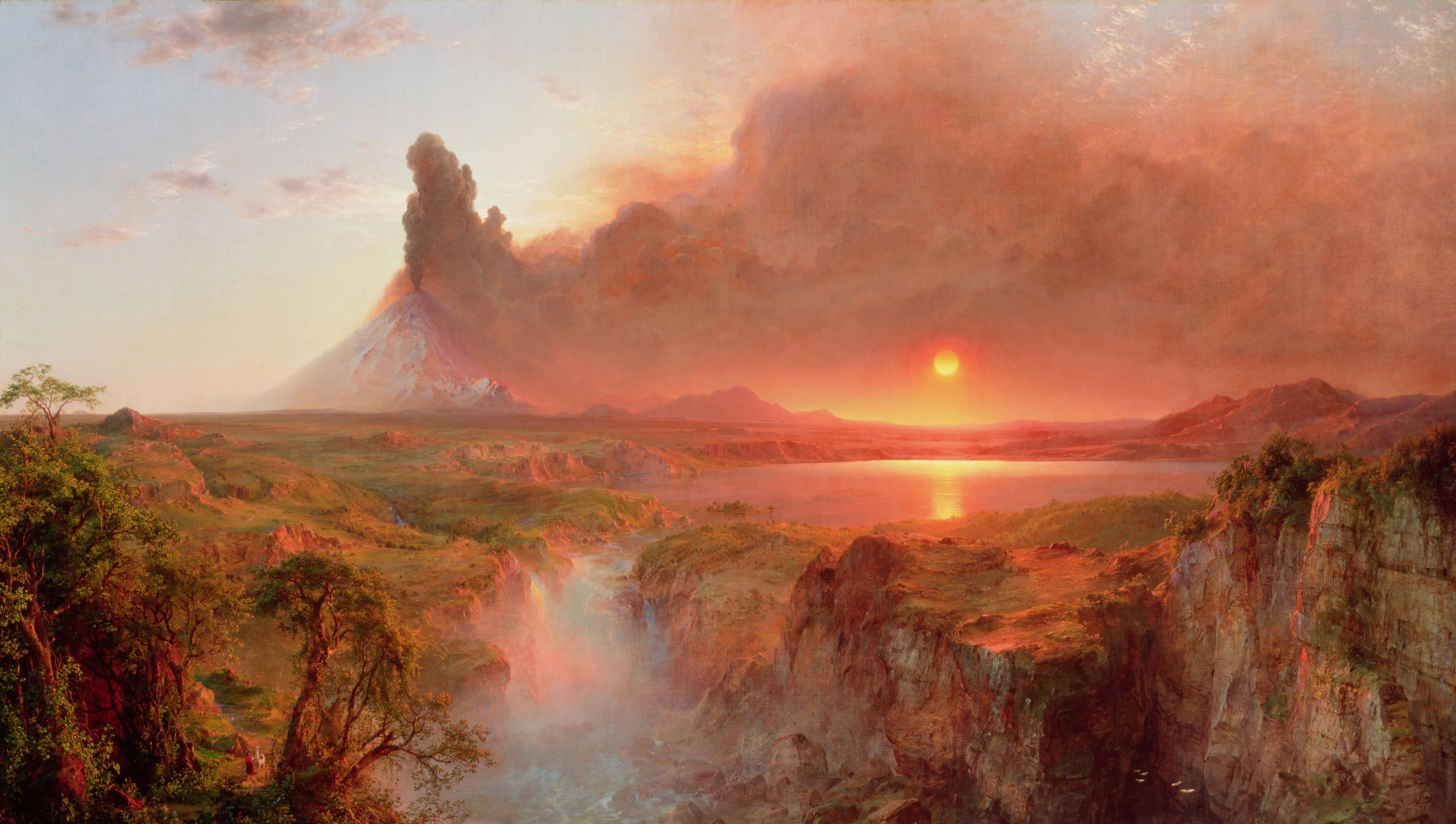|
Cyrus W. Field
Cyrus West Field (November 30, 1819July 12, 1892) was an American businessman and financier who, along with other entrepreneurs, created the Atlantic Telegraph Company and laid the first telegraph cable across the Atlantic Ocean in 1858. Early life Field was born in Stockbridge, Massachusetts to Rev. David Dudley Field, a Congregational clergyman, and Submit Dickinson Field, daughter of Revolutionary War Captain Noah Dickinson from Somers, Connecticut. The eighth of ten children, he was the brother of David Dudley Field Jr., Henry Martyn Field, and Stephen Johnson Field, the 38th United States Supreme Court Justice, among other siblings. When he was 15 years old, Field came to New York City, where he was hired as an errand boy in the A. T. Stewart & Co., a dry goods merchant firm. He entered a business apprenticeship, and earned fifty dollars at his first year as a storeroom clerk; his pay was doubled the following year.Judson, I. F. (1896)Cyrus W. Field, his life and work, 18 ... [...More Info...] [...Related Items...] OR: [Wikipedia] [Google] [Baidu] |
Stockbridge, Massachusetts
Stockbridge is a town in Berkshire County in Western Massachusetts, United States. It is part of the Pittsfield, Massachusetts, Metropolitan Statistical Area. The population was 2,018 at the 2020 census. A year-round resort area, Stockbridge is home to the Norman Rockwell Museum, the Austen Riggs Center (a psychiatric treatment center), and Chesterwood, home and studio of sculptor Daniel Chester French. History Stockbridge was settled by British missionaries in 1734, who established it as a praying town for the Stockbridge Indians, an indigenous Mohican tribe. The township was set aside for the tribe by Massachusetts colonists as a reward for their assistance against the French in the French and Indian Wars. The Rev. John Sergeant, from Newark, New Jersey, was their first missionary. Sergeant was succeeded in this post by Jonathan Edwards, a Christian theologian associated with the First Great Awakening. First chartered as Indian Town in 1737, the village was incorporated on ... [...More Info...] [...Related Items...] OR: [Wikipedia] [Google] [Baidu] |
Westfield, Massachusetts
Westfield is a city in Hampden County, Massachusetts, Hampden County, in the Pioneer Valley of western Massachusetts, United States. Westfield was first settled by Europeans in 1660. It is part of the Springfield, Massachusetts Springfield metropolitan area, Massachusetts, Metropolitan Statistical Area. The population was 40,834 at the 2020 census. History The area was originally inhabited by the Pocomtuc, and was called ''Woronoco'' (meaning "the winding land"). Trading houses were built in 1639 to 1640 by European settlers from the Connecticut Colony. Massachusetts asserted jurisdiction, and prevailed after a boundary survey. In 1647, Massachusetts made Woronoco part of Springfield, Massachusetts, Springfield."Chronology of Westfield (1)" Louis M. Dewey, copyright 1905–1919. Land was “increment ... [...More Info...] [...Related Items...] OR: [Wikipedia] [Google] [Baidu] |
Peter Cooper
Peter Cooper (February 12, 1791April 4, 1883) was an American industrialist, inventor, philanthropist, and politician. He designed and built the first American steam locomotive, the ''Tom Thumb'', founded the Cooper Union for the Advancement of Science and Art, served as its first president, and stood for election as the Greenback Party's candidate in the 1876 presidential election. Cooper was 85 years old at the time, making him the oldest person to ever be nominated for president. Cooper began tinkering at a young age while working in various positions in New York City. He purchased a glue factory in 1821 and used that factory's profits to found the Canton Iron Works, where he earned even larger profits by assembling the ''Tom Thumb''. Cooper's success as a businessman and inventor continued over the ensuing decades, and he became the first mill operator to successfully use anthracite coal to puddle iron. He also developed numerous patents for products such as gelatin and part ... [...More Info...] [...Related Items...] OR: [Wikipedia] [Google] [Baidu] |
Frederick Newton Gisborne
Frederic Newton Gisborne (8 March 1824 – 30 August 1892) was a British inventor and electrician. Born in Broughton, Preston, Lancashire, England, he left England in 1842 for a trip around the world, finally settling in Canada in 1845. By close study he became an expert electrician, and original improvements in methods and instruments soon attracted so much attention that he was appointed superintendent of the lines of the Nova Scotia government at Halifax. After studying the problems of ocean telegraphy, he laid the first deep-sea cable in North American waters, between Prince Edward Island and New Brunswick in 1852. In 1853 he went to New York City, where in 1854 he became associated with Cyrus W. Field. On the organization of the New York, Newfoundland, and London Telegraph Company, he was appointed the chief engineer. The new company intended to lay the first deep-sea telegraph cable between Europe Europe is a large peninsula conventionally considered a contin ... [...More Info...] [...Related Items...] OR: [Wikipedia] [Google] [Baidu] |
Telegraphy
Telegraphy is the long-distance transmission of messages where the sender uses symbolic codes, known to the recipient, rather than a physical exchange of an object bearing the message. Thus flag semaphore is a method of telegraphy, whereas pigeon post is not. Ancient signalling systems, although sometimes quite extensive and sophisticated as in China, were generally not capable of transmitting arbitrary text messages. Possible messages were fixed and predetermined and such systems are thus not true telegraphs. The earliest true telegraph put into widespread use was the optical telegraph of Claude Chappe, invented in the late 18th century. The system was used extensively in France, and European nations occupied by France, during the Napoleonic era. The electric telegraph started to replace the optical telegraph in the mid-19th century. It was first taken up in Britain in the form of the Cooke and Wheatstone telegraph, initially used mostly as an aid to railway signalling. Th ... [...More Info...] [...Related Items...] OR: [Wikipedia] [Google] [Baidu] |
Muzo
Muzo () is a town and municipality in the Western Boyacá Province, part of the department of Boyacá, Colombia. It is widely known as the world capital of emeralds for the mines containing the world's highest quality gems of this type. Muzo is situated at a distance of from the departmental capital Tunja and from the capital of the Western Boyacá Province, Chiquinquirá. The urban centre is at an altitude of above sea level. Muzo borders Otanche and San Pablo de Borbur in the north, Maripí and Coper in the east, Quípama in the west and the department of Cundinamarca in the south. Etymology The town of Muzo was called Villa de la Santísima Trinidad de los Muzos, or simply Trinidad, when the Spanish conquistadors first founded the settlement in western Boyacá. Muzo is the autonym of the Muzo, the indigenous people who inhabited the region before the Spanish conquest. Climate The median temperature of Muzo is and the annual precipitation . History Before the Sp ... [...More Info...] [...Related Items...] OR: [Wikipedia] [Google] [Baidu] |
Louis Rémy Mignot
Louis Rémy Mignot (February 3, 1831 – September 22, 1870) was an American painter of Huguenot descent. Associated with the Hudson River School of landscape artists, his southern US heritage and the influence of his time spent in Europe gave him a distinct style within that group, in painting vegetation and atmospheric effects. Mignot's parents came to the US from France after the Bourbon Restoration in 1815. Mignot pursued his interest in art in Europe beginning in 1848, and spent much of his life outside the US. Starting in 1850 he worked for four years in Andreas Schelfhout's studio in The Hague, Netherlands, then travelled in Europe. Returning to New York City, he soon travelled with artist Frederic Edwin Church to Ecuador in 1857, gathering material for his paintings of the tropics, the subject of a large portion of his subsequent work. In 1858 he had a studio at the Tenth Street Studio Building in New York City. The next year the National Academy of Design, where he had ... [...More Info...] [...Related Items...] OR: [Wikipedia] [Google] [Baidu] |
Alexander Von Humboldt
Friedrich Wilhelm Heinrich Alexander von Humboldt (14 September 17696 May 1859) was a German polymath, geographer, naturalist, explorer, and proponent of Romantic philosophy and science. He was the younger brother of the Prussian minister, philosopher, and linguist Wilhelm von Humboldt (1767–1835). Humboldt's quantitative work on botanical geography laid the foundation for the field of biogeography. Humboldt's advocacy of long-term systematic geophysical measurement laid the foundation for modern geomagnetic and meteorological monitoring. Between 1799 and 1804, Humboldt travelled extensively in the Americas, exploring and describing them for the first time from a modern Western scientific point of view. His description of the journey was written up and published in several volumes over 21 years. Humboldt was one of the first people to propose that the lands bordering the Atlantic Ocean were once joined (South America and Africa in particular). Humboldt resurrected the use ... [...More Info...] [...Related Items...] OR: [Wikipedia] [Google] [Baidu] |
Panama
Panama ( , ; es, link=no, Panamá ), officially the Republic of Panama ( es, República de Panamá), is a transcontinental country spanning the southern part of North America and the northern part of South America. It is bordered by Costa Rica to the west, Colombia to the southeast, the Caribbean Sea to the north, and the Pacific Ocean to the south. Its capital and largest city is Panama City, whose metropolitan area is home to nearly half the country's million people. Panama was inhabited by indigenous tribes before Spanish colonists arrived in the 16th century. It broke away from Spain in 1821 and joined the Republic of Gran Colombia, a union of Nueva Granada, Ecuador, and Venezuela. After Gran Colombia dissolved in 1831, Panama and Nueva Granada eventually became the Republic of Colombia. With the backing of the United States, Panama seceded from Colombia in 1903, allowing the construction of the Panama Canal to be completed by the United States Army Corps of En ... [...More Info...] [...Related Items...] OR: [Wikipedia] [Google] [Baidu] |
Colombia
Colombia (, ; ), officially the Republic of Colombia, is a country in South America with insular regions in North America—near Nicaragua's Caribbean coast—as well as in the Pacific Ocean. The Colombian mainland is bordered by the Caribbean Sea to the north, Venezuela to the east and northeast, Brazil to the southeast, Ecuador and Peru to the south and southwest, the Pacific Ocean to the west, and Panama to the northwest. Colombia is divided into 32 departments and the Capital District of Bogotá, the country's largest city. It covers an area of 1,141,748 square kilometers (440,831 sq mi), and has a population of 52 million. Colombia's cultural heritage—including language, religion, cuisine, and art—reflects its history as a Spanish colony, fusing cultural elements brought by immigration from Europe and the Middle East, with those brought by enslaved Africans, as well as with those of the various Amerindian civilizations that predate colonization. Spanish is th ... [...More Info...] [...Related Items...] OR: [Wikipedia] [Google] [Baidu] |
Ecuador
Ecuador ( ; ; Quechua: ''Ikwayur''; Shuar: ''Ecuador'' or ''Ekuatur''), officially the Republic of Ecuador ( es, República del Ecuador, which literally translates as "Republic of the Equator"; Quechua: ''Ikwadur Ripuwlika''; Shuar: ''Ekuatur Nunka''), is a country in northwestern South America, bordered by Colombia on the north, Peru on the east and south, and the Pacific Ocean on the west. Ecuador also includes the Galápagos Islands in the Pacific, about west of the mainland. The country's capital and largest city is Quito. The territories of modern-day Ecuador were once home to a variety of Indigenous groups that were gradually incorporated into the Inca Empire during the 15th century. The territory was colonized by Spain during the 16th century, achieving independence in 1820 as part of Gran Colombia, from which it emerged as its own sovereign state in 1830. The legacy of both empires is reflected in Ecuador's ethnically diverse population, with most of its mill ... [...More Info...] [...Related Items...] OR: [Wikipedia] [Google] [Baidu] |
Frederic Edwin Church
Frederic Edwin Church (May 4, 1826 – April 7, 1900) was an American landscape painter born in Hartford, Connecticut. He was a central figure in the Hudson River School of American landscape painters, best known for painting large landscapes, often depicting mountains, waterfalls, and sunsets. Church's paintings put an emphasis on realistic detail, dramatic light, and panoramic views. He debuted some of his major works in single-painting exhibitions to a paying and often enthralled audience in New York City. In his prime, he was one of the most famous painters in the United States. Biography Beginnings Frederic Edwin Church was a direct descendant of Richard Church, a Puritan pioneer from England who accompanied Thomas Hooker on the original journey through the wilderness from Massachusetts to what would become Hartford, Connecticut. Church was the son of Eliza (1796–1883) and Joseph Church (1793–1876). Frederic had two sisters and no surviving brothers. His father was s ... [...More Info...] [...Related Items...] OR: [Wikipedia] [Google] [Baidu] |





